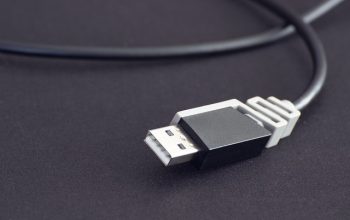When transitioning vehicle ownership, understanding DMV title transfer laws is paramount. This article delves into the essentials of the vehicle title transfer process, guiding you through each step to ensure a seamless transaction. Whether you’re buying or selling a car, knowing the DMV title transfer requirements and associated fees is crucial for a hassle-free handover. We’ll explore key forms, expenses, and best practices for both in-state and out-of-state transfers, including how to address issues like lost or mismatched titles. Learn the ins and outs of how to transfer a car title post-purchase with our comprehensive guide, designed to help you navigate the DMV’s regulations efficiently and effectively.
- Understanding the Vehicle Title Transfer Process
- Key DMV Title Transfer Forms and Requirements
- Calculating and Paying Title Transfer Fees and Costs
- Steps to Follow for In-State Title Transfers
- Navigating Out-of-State Title Transfers
- How to Handle a Lost or Mismatched Title During Transfer
- Completing the Title Transfer After a Car Purchase: Tips and Best Practices
Understanding the Vehicle Title Transfer Process

Undergoing a vehicle title transfer is a critical step in the process of buying or selling a vehicle, ensuring legal ownership is properly established. The DMV title transfer process begins with the completion of the necessary forms, which vary by state but typically include an application for a certificate of title. It’s imperative to obtain these forms from your local Department of Motor Vehicles (DMV) or their equivalent in your state, as they provide specific instructions and requirements. Additionally, individuals must present the current vehicle title, proof of vehicle sale or purchase, and a valid photo ID. Title transfer fees and costs are also due at this stage; these fees can differ based on the state and the type of vehicle. To facilitate a seamless title transfer after car purchase, especially when it’s a used car, one must ensure all parties involved have completed their sections of the forms accurately and that all supporting documents are in order. This includes verifying mileage, checking vehicle identification number (VIN) accuracy, and confirming that liens, if any, have been settled. By adhering to these DMV title transfer requirements and preparing for any associated fees, car owners can navigate the process with confidence, whether they’re handling an in-state or out-of-state transfer. It’s advisable to utilize a detailed checklist provided by the DMV or reputable online resources to ensure no steps are skipped and to expedite the title transfer process post-purchase.
Key DMV Title Transfer Forms and Requirements

When embarking on the vehicle title transfer process, it’s crucial to familiarize oneself with the necessary DMV title transfer forms and requirements. Typically, a Bill of Sale or proof of purchase is required to initiate the transfer, serving as documentation that the vehicle has been bought or sold. Additional paperwork may involve completing a formal application for title transfer, such as the “Application for Title” form. This form not only provides the DMV with the essential details about the vehicle but also confirms the new ownership. Additionally, proof of insurance and a valid photo ID are standard requirements to verify the identity and legal status of the owner.
Title transfer fees and costs vary by state, so it’s important to be aware of the specific amounts due at the time of transaction. These fees often include a title processing fee, registration fee, and any applicable sales tax based on the vehicle’s value. To ensure a seamless transfer, one should prepare all necessary documents beforehand and check state-specific requirements, as processes for in-state and out-of-state transfers can differ significantly. For instance, if the vehicle was previously registered out of state, additional forms may be required to demonstrate the vehicle’s previous registration status and to clear any liens. By meticulously completing all DMV title transfer forms and preparing to pay the requisite fees, car owners can navigate the title transfer process confidently and efficiently.
Calculating and Paying Title Transfer Fees and Costs

When navigating the vehicle title transfer process, understanding the associated fees and costs is crucial for a seamless transaction. Title transfer fees and costs vary by state, so it’s important to check with your local Department of Motor Vehicles (DMV) for specific amounts. Typically, these fees are due upon submission of the necessary DMV title transfer documents. The forms required for a title transfer after a car purchase usually include a properly assigned title, an application for title and registration, and proof of insurance and vehicle identification number (VIN). Additionally, you may need to provide a bill of sale or proof of payment of any outstanding taxes or liens.
The cost of transferring a car title includes state-specific fees such as title processing fees, registration fees, and sometimes sales tax based on the purchase price of the vehicle. If the vehicle is being transferred due to a move from another state, additional costs may apply, such as use tax for vehicles previously registered out of state. To avoid any delays or complications, it’s advisable to prepare all required documents ahead of time and familiarize yourself with the exact title transfer fees and costs in your jurisdiction. This preparation ensures that the transfer is completed efficiently, allowing you to legally own and operate the vehicle with minimal disruption to your routine. Always refer to the official DMV website or contact the DMV directly for the most accurate and up-to-date information regarding title transfer fees and costs.
Steps to Follow for In-State Title Transfers

When transferring a vehicle title within your state, it is crucial to adhere to the specific DMV title transfer requirements and procedures. The initial step involves acquiring the correct forms for transferring a title from your local Department of Motor Vehicles (DMV) or their equivalent. Typically, you will need to complete a application for title and registration. Ensure that the seller provides the current title with no liens against it; this is a key document in the vehicle title transfer process. Once all forms are filled out accurately, present them along with proof of insurance, your driver’s license, and any necessary identification to the DMV.
Title transfer fees and costs vary by state but are an integral part of the process. These fees often include a title transfer fee, registration fees, and any applicable sales tax based on the vehicle’s value. It is important to be aware of these charges beforehand to avoid any unexpected expenses. After submitting all required documents and fees, the DMV will process your application and issue a new title in your name. This typically results in a new registration card and title being mailed to you, marking the completion of the title transfer after car purchase within your state. Remember to keep track of any deadlines for submitting the necessary paperwork and to follow up with the DMV if there are any delays or additional requirements needed for your specific situation.
Navigating Out-of-State Title Transfers

When transferring a vehicle title across state lines, the process differs from an in-state transaction and requires careful attention to the specific DMV title transfer requirements for the state of origin as well as the state of destination. To commence the out-of-state title transfer process, one must first obtain the appropriate forms from the respective DMVs involved. These forms typically include a bill of sale, an application for a certificate of title, and any necessary state-specific documentation verifying the vehicle’s identity and ownership history. The vehicle title transfer process is not complete without addressing the title transfer fees and costs associated with the transaction. These fees vary by state but generally include title and registration fees, excise taxes, and possibly sales tax on the value of the vehicle if the sale occurred between private parties. It’s crucial to be aware of these costs ahead of time to ensure all financial requirements are met upon submission.
Upon completion of the forms and payment of the necessary title transfer fees, the new owner must then submit the documentation to the state of origin to initiate the release of the title. This step is pivotal as it signifies the relinquishing of ownership where the vehicle was previously registered. Once the title is released, it should be promptly forwarded to the new owner and the state of destination’s DMV. In the receiving state, the new owner must then apply for a new title and registration within the required timeframe, which often includes passing an emissions inspection and providing proof of insurance. By adhering to these steps and being mindful of the timelines and paperwork involved in the interstate vehicle title transfer process, car owners can ensure a seamless transition of ownership and compliance with state regulations.
How to Handle a Lost or Mismatched Title During Transfer

If the original vehicle title is lost or the information on the title does not accurately reflect the current ownership details during the transfer process, it’s crucial to address this issue promptly. To handle a lost title, you should immediately report it to your local Department of Motor Vehicles (DMV) and request a duplicate title. This can typically be done by submitting the appropriate forms, such as an Application for Replacement Title, along with any required identification and proof of ownership documents. The DMV title transfer requirements stipulate that the application must be accompanied by the correct title transfer fees and costs, which vary by state. These fees are non-refundable and are necessary to process your request for a new title.
For cases where the title mismatches due to incorrect information like names or vehicle descriptions, you should correct these errors before completing the transfer. This involves submitting an amended application to the DMV with the accurate details, ensuring that both the seller’s and buyer’s information is precise. Alongside the corrected form, you must provide supporting documentation, such as proof of identity and ownership, which could include a bill of sale, registration documents, or a notarized statement explaining the discrepancies. The DMV will then review your submission, verify the information, and issue an amended title reflecting the correct details. Ensuring that the vehicle title transfer process is conducted with the right documentation and fees avoids potential legal issues and guarantees that the title transfer after car purchase is completed without undue delays.
Completing the Title Transfer After a Car Purchase: Tips and Best Practices

When navigating the vehicle title transfer process following a car purchase, it’s crucial to adhere to DMV title transfer requirements to avoid delays. To initiate the transfer, one must first complete the necessary forms provided by the Department of Motor Vehicles (DMV). These forms vary by state but generally include an application for a certificate of title along with relevant odometer disclosures if applicable. It’s advisable to obtain these forms from your local DMV office or their official website beforehand to ensure you have all the required paperwork.
Once the correct forms are filled out, submit them alongside proof of ownership, such as the previous registration, and any title transfer fees and costs associated with the transaction. These fees typically cover the administrative expenses for processing the transfer. It’s important to verify the exact amount and payment methods accepted by your state’s DMV ahead of time. Additionally, be prepared to provide identification, proof of insurance, and possibly an emissions or safety inspection certificate, depending on local regulations. By meticulously preparing all necessary documentation and understanding the title transfer fees and costs involved, you can facilitate a smoother transition of vehicle ownership. Keep in mind that if you’ve purchased a used car, additional paperwork such as a bill of sale or a lien release may be required. Following these tips and best practices will help ensure your title transfer after a car purchase is completed efficiently and without unnecessary complications.
Navigating the DMV title transfer process is a critical step for vehicle ownership transfers, ensuring legal and proper title changeover. This article has outlined the comprehensive details and requirements necessary for executing a seamless title transfer. From understanding the forms and fees involved to specific guidance on in-state and out-of-state transitions, readers are now well-equipped to handle the transfer of a car title post-purchase with confidence and efficiency. Remember to adhere strictly to the DMV’s stipulated procedures and documentation requirements to avoid delays. For clear, step-by-step guidance through this process, consult the provided checklist and best practices, your reliable guide for a hassle-free vehicle title transfer experience.



